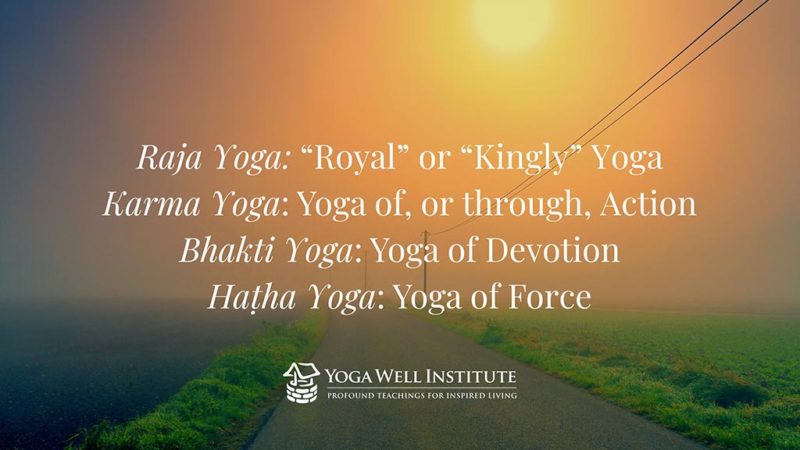If you’ve been studying Yoga with us at the Yoga Well Institute for any length of time, you are undoubtedly familiar with Patañjali’s Yogasūtra.
These important teachings are known as raja yoga, which means the “Royal” or “Kingly” Yoga. Patañjali’s approach to attaining a state of yoga emphasizes the quality and structure of the mind. Of course, all Yoga approaches have something to say about the mind, but the path described by Patañjali is particularly detailed about how to work with the state of the mind and the structures it assumes (i.e. its patterns). Hence the emphasis on observing your own behavior and working to shift your patterning. It is fair to characterize Patañjali’s description of the Yoga path as a psychological approach to Yoga.
You’re probably also aware of other approaches to attaining a state of Yoga, like the Bhagavad Gītā’s karma yoga, which means the Yoga of, or through, Action, and bhakti yoga which is the Yoga of Devotion. Each of these is a description of a path to a state of Yoga, in the former through fulfilling one’s dharma (duties & responsibilities) and in the latter through offering everything we do to a higher force. These paths can be characterized as intentional or devotional approaches to Yoga.

Another well known approach is haṭha yoga, which translates (misleadingly) as Forceful Yoga.
Haṭha yoga emphasizes the functioning of prāṇa and agni as the primary means for accessing a state of Yoga. Its main tools are prāṇāyāma (conscious breathing) and mudrā. Mudrās are special positions of the body considered to direct the flow of prāṇa in specific ways, (in this context it does not mean positions of the hands or fingers). Śri Krishnamacharya is even on record as saying that haṭha yoga IS prāṇāyāma. Because of this emphasis, haṭha yoga can be characterized as a physiological approach to Yoga. And indeed, haṭha yoga principles and techniques are the ones most closely related to the practice of Yoga as it is widely known today.
These different approaches to Yoga share a lot of common ground, indeed a state of Yoga is the goal of all of them!
At the same time each one has its own individual emphasis, strengths and practices. Combining their ideas without understanding their larger context can create a lot of confusion. While understanding how they overlap and fit together makes for an incredibly rich practice of Yoga, one where virtually everything we do is means of refining our Yoga.
This is one of the reasons why we, at the Yoga Well Institute, take a long view toward the study of Yoga. And we gratefully accept our Teachers’ gift of life-long learning.
Study Haṭha Yoga Pradīpika
If you wish to study Haṭha Yoga Pradīpika in depth and experience authentic haṭha yoga, this is for you.

Chase Bossart
M.A., C-IAYT, E-RYT 500
Executive Director of the Yoga Well Institute, Chase has been studying Yoga, Sanskrit, eastern philosophy and religion for nearly 30 years. He had the opportunity to personally study with Mr. TKV Desikachar and serve as a teacher at the Krishnamacharya Yoga Mandiram.




